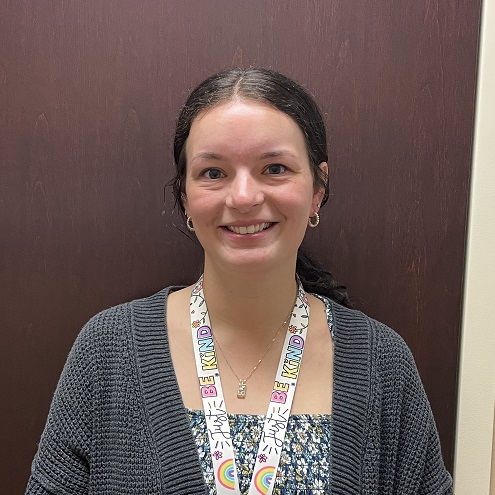Applied behavior analysis (ABA) therapy is a widely recognized, evidence-based approach used to improve socially significant behaviors in individuals—most commonly those diagnosed with autism spectrum disorder (ASD). Rooted in the principles of learning and behavior, ABA therapy helps people build meaningful skills by breaking down complex tasks into manageable steps and reinforcing positive behaviors.
In this article, Tina Sullivan with the Riverside Healthcare ABA Therapy Clinic and Drew Haverstock with Milestone Therapy discuss what ABA therapy is, how it works, who it helps, and why it’s considered one of the most effective interventions for behavior change.
What Does ABA Therapy Involve?
ABA therapy is designed to support children with autism by reinforcing positive behaviors and reducing less desirable ones. At its core, the approach encourages behaviors we want to see more of through positive reinforcement, while redirecting children away from behaviors we want to see less of. This helps children learn which actions are beneficial in a clear, supportive way.

In the Riverside clinic, the focus of treatment is placed on children with an autism diagnosis from ages two to ten. “What makes our ABA therapy clinic unique is that we are a pediatric ABA center with our primary focus being on functional communication skills, building replacement behaviors, and working closely with families to support the generalization of skills children are developing in the clinic,” states Sullivan. “We strive to create a space where families feel heard and where treatment plans are directly tied to what matters most to the families and their children in their day-to-day life.”
Getting Started with ABA Therapy
To receive ABA therapy at the Riverside clinic, a child must first have a formal autism diagnosis. The process typically begins with a visit to the child’s pediatrician to discuss concerns and symptoms. From there, families are referred to a specialist—such as a pediatric developmental psychologist—for comprehensive testing to confirm the diagnosis.
Once the diagnosis is made, the child can be referred to Riverside, where staff conduct additional evaluations to determine service eligibility. These evaluations are submitted to the insurance company for final approval of services.
“Typically, if we have all of our I's dotted and T's crossed, we're good. But, it should be noted that the service length and volume of work for children who are getting ABA services is significantly longer and larger in scope than it would be for something on the medical side, like physical therapy, occupational therapy, and speech therapy,” explains Haverstock. 
Children in ABA therapy often attend the clinic daily for four to six hours, totaling 20 to 40 hours per week. Because of this intensive schedule, there's a higher level of scrutiny in determining eligibility. A key part of the process involves ongoing data collection and regular updates to the care plan to ensure meaningful progress. “It's very cool the longer you get the chance to really see what's happening,” adds Haverstock. “It's very, very neat.”
An All-Encompassing Approach to Therapy
At the Riverside Clinic, each ABA therapy session is highly structured but designed to be fun and engaging. Children work one-on-one with a registered behavior technician (RBT), under the supervision of a board-certified behavior analyst (BCBA). Sessions include a mix of structured teaching and natural opportunities—like using snack time to work on communication or playtime to encourage social interaction. Activities are tailored to each child’s interests to build motivation and achieve treatment goals.
Parental involvement is also a key part of therapy. Since children spend most of their time outside the clinic, it's essential that the skills learned carry over into everyday life. The clinic supports this by providing regular parent education, encouraging consistent language, reinforcement strategies, and expectations at home, school, and in the community to ensure long-term success.
“The parent education process is wonderful because it's laid out exactly what they need to do, how they can continue to encourage their child to see the strides they're hoping for, and what we are doing to constantly help modify that plan of care to allow them to progress further and further towards functional independence,” assures Haverstock.
Measuring Results: A Key Part of the Therapy Process
From the start of services, the ABA team works closely with families to define long-term goals—specifically, what “success” or completion of therapy looks like for their child. These goals are broken down into smaller, measurable benchmarks that guide therapy both in the clinic and at home, helping ensure that skills are generalized to everyday settings like school and the community.
“When we're beginning services, we're connecting with the families right from the beginning of the process. We are meeting with them during the course of writing the treatment plan to establish benchmarks in order to determine what their child being ‘done’ with ABA services looks like,” shares Sullivan.
Progress is tracked through detailed, objective data collection by RBTs during each session. This includes not only progress on treatment goals but also observations of behaviors, preferences, and engagement. BCBAs regularly review this data to adjust treatment plans as needed. The level of detail and responsiveness in ABA therapy is extensive and dynamic, with plans reassessed and updated every six months based on the child’s direction and progress.
“The level of attention to detail is pretty amazing. Everything is captured,” states Haverstock. “And, we even note some of the things that are occurring that may not directly apply to the goals they're currently working on. Every six months we'll re-up and change the approach, always keeping tabs on the direction the child is heading in.”
The Logistics: From the Initial Referral to Insurance Approval
While the clinic is still building out its systems, the referral-to-therapy timeline may take a bit longer initially. Once a referral is received and all necessary documentation—such as the diagnostic assessment and referral paperwork—is in place, the clinic coordinator reaches out to the family to begin the process.
From there, the goal is to complete the direct assessment, write the treatment plan, and submit everything to the insurance company within about 30 days. Insurance authorization can then take anywhere from two weeks to a month, depending on the provider. Ideally, services would begin roughly a month after the assessment is scheduled, though timelines can vary based on documentation and insurance factors.
“In an ideal world, we would look for that to be about a month, possibly a bit longer with some wiggle room, just making sure to allow time for the authorization request to be approved by insurance,” notes Sullivan. “At that point, we're acquiring the staff we need to fill the teams, making sure we have all the other necessary items on the backend completed while we're waiting for authorization.” For more information on Riverside Behavioral Health, go to myrhc.net/behavioralhealth.
